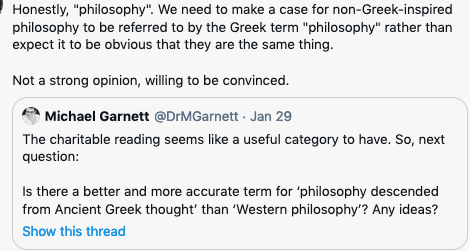U.T. Vīrarāghavācārya’s Sūkṣmārthaṭīkā defines `validity’ (prāmāṇya) as “the fact of being about a thing (viṣaya) appearing in the cognition in the same way in which it exists” (ad 1.1.5, p. 77 1971), thus showing an awareness of the distinction between the knowledge-independent real thing and its representation in knowledge. If the two correspond, there is knowledge.
Contrary to the common use of the word viṣaya (see Freschi, Keidan), Vīrarāghavācarya appears to denote the knowledge-independent real thing as viṣaya. This thing is said to specify (viśeṣaṇa) a cognition when this is about it. In the case of a valid cognition, the viṣaya specifies the cognition which appears as specified by that viṣaya.
Now, what happens in case of invalid cognitions? Can it be that the knowledge-independent thing has no impact at all on the invalid cognition? Vīrarāghavācārya distinguishes therefore between the prakāra `mode’ of cognition, i.e., the apparent content of it, the viṣeṣaṇa `specification’ of the cognition, and the viṣaya `knowledge-independent thing’. Suppose two people see a piece of mother-of-pearl on the beach and one of the two mistakes it for silver. Both have in front of them the same viṣaya, which influences (viśiṣ-) the cognition in the same way. However, the prakāra of the cognition is different, being in one case mother-of-pearl and in the other silver. In other words, we have valid cognitions when the prakāra appearing in the cognition is about the viṣaya and invalid cognitions when the viṣaya does not appear in the cognition as its viśeṣaṇa.
Thus, an erroneous cognition is prompted by a certain viṣaya (e.g., mother-of-pearl) and has a different prakāra (e.g., silver), but it continues to be determined by its viṣaya. Why not just speaking of viṣaya and prakāra? Possibly because the viṣaya belongs to the ontological field, whereas the way it affects cognitions is via its determining them (viṣeṣyakatva).
The latter term needs to be introduced in order to avoid the naïve assumption that the cognition represents directly the external object. prakāra and viṣaya are connected via the fact that a viṣaya determines the cognition, which therefore displays the resulting prakāra.
Last, U.T. Vīrarāghavācārya also speaks of characteristic (dharma) and characteristic-bearer (dharmin). The dharma is the presentation-mode of a certain external object. In this sense, the dharma-dharmin pair on the ontological level corresponds to the prakāra-viṣaya one on the epistemic one. A correct cognition recognises as its prakāra the same dharma which actually inheres in a given dharmin.
At this point one might wonder whether the picture of the SĀṬ corresponds broadly to an externalist account. In fact, it mentions an external check (the correspondence between the viṣaya and the prakāra) for truth. However, such account of truth is only normatively relevant. For all practical purposes, truth does not need to be ascertained. U.T. Vīrarāghavācārya is an upholder of intrinsic validity and, hence, the externalist account of truth is accompanied by an account of justification which requires neither external nor internal reasons.
There is also something else which is interestingly new with respect to the Seśvaramīmāṃsā account of epistemology, namely the link between access to cognitions and justification of validity (and here I would be glad to read your thoughts!). In fact, first U.T. Vīrarāghavācārya says that validity is intrinsic because a knower grasps at the same time what appears as the content of a cognition and the cognition’s determining factor. Then, his Naiyāyika opponent retorts that validity is extrinsic, because what appears as the content of a given cognition is not the same thing as what appears once one thinks about the cognitive event.
Then, U.T. Vīrarāghavācārya replies that this is not a real problem, since it is enough for justification that what appears at the metalevel is connected to what appears in the cognition, thus pointing to svataḥprāmāṇya vs parataḥprāmāṇya as being about cognition-objects and their representations at a meta-cognitive level. If the two happen to diverge, then, it appears, an additional step of external justification is needed.
In other words, the picture gets more complex once one adds to the above quasi-externalist account of truth the awareness of validity (see next posts) and U.T. Vīrarāghavācārya seems more open to the Nyāya point of view than Veṅkaṭanātha.

